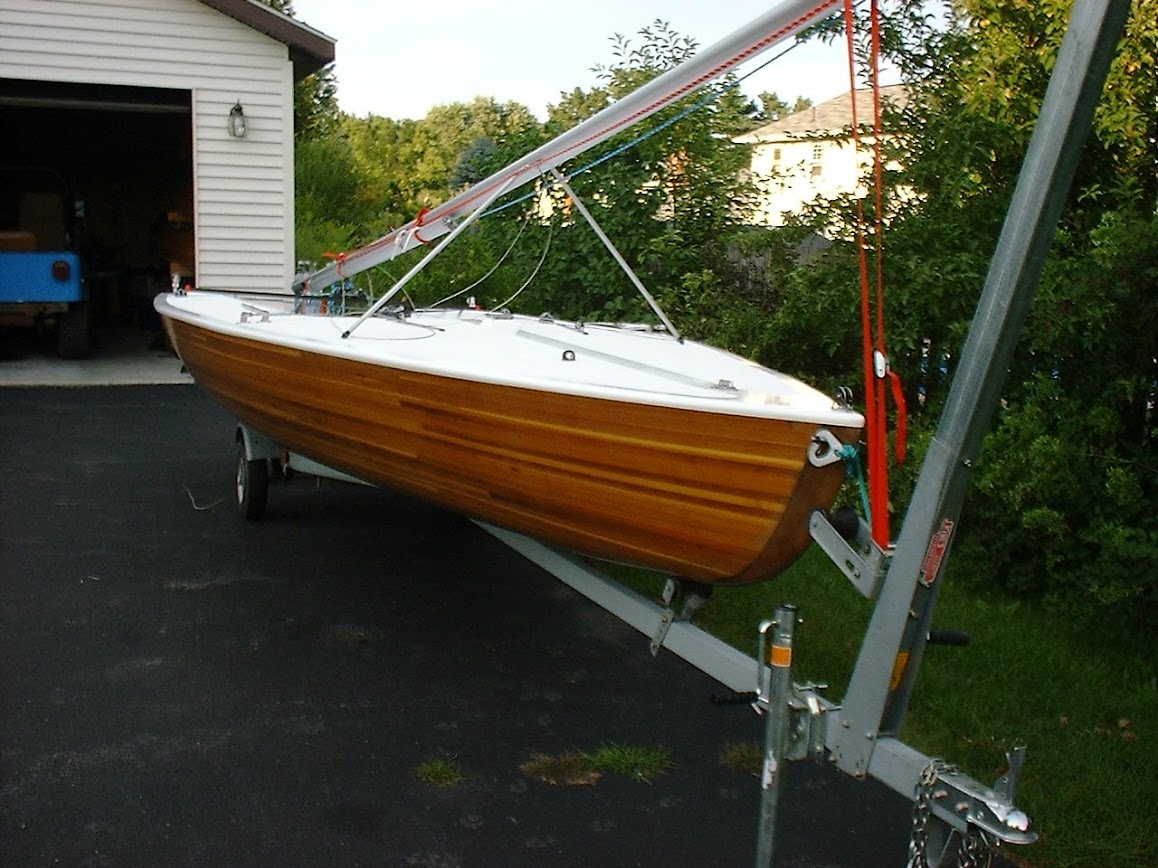The boat build category has been a little slow lately, so I guess I'll share my K19 sailboat build.
The construction is cedar strips, with 10 oz glass inside and out, so it's quite similar to a strip canoe build, but on steroids.
I bought the plans from the now defunct Northwest Marine Design Co., headed by Anthony C. Gondola, N.A.
The build took about 400 hours, mostly because I had never built a sailboat before, and I wasted much time worrying in advance about issues that became self evident and easily overcome.
Total cost (in 2004 dollars) was about $4,000, give or take. A similar design and weight high performance dinghy production boat was selling for $19,000 around the time I finished the build.
I don't have time just now for a fully detailed step by step, but I'll post a few teaser pics now. Fear not, I'll add plenty of pics and descriptions, just not tonight.
Oh, almost forgot, for those of you that need specifics, OAL 19'2", Beam 7'1", weight 350 lbs, sail area 350 sq ft (175 main and jib, 175 asymmetric spinnaker). It planes upwind, if I can keep it flat.



The construction is cedar strips, with 10 oz glass inside and out, so it's quite similar to a strip canoe build, but on steroids.
I bought the plans from the now defunct Northwest Marine Design Co., headed by Anthony C. Gondola, N.A.
The build took about 400 hours, mostly because I had never built a sailboat before, and I wasted much time worrying in advance about issues that became self evident and easily overcome.
Total cost (in 2004 dollars) was about $4,000, give or take. A similar design and weight high performance dinghy production boat was selling for $19,000 around the time I finished the build.
I don't have time just now for a fully detailed step by step, but I'll post a few teaser pics now. Fear not, I'll add plenty of pics and descriptions, just not tonight.
Oh, almost forgot, for those of you that need specifics, OAL 19'2", Beam 7'1", weight 350 lbs, sail area 350 sq ft (175 main and jib, 175 asymmetric spinnaker). It planes upwind, if I can keep it flat.
